Yamaha True X SR-X50A review: soundbar bundle delivers succinct bass
Yamaha's soundbar bundle delivers all you could need, including one of the best subwoofers at this price

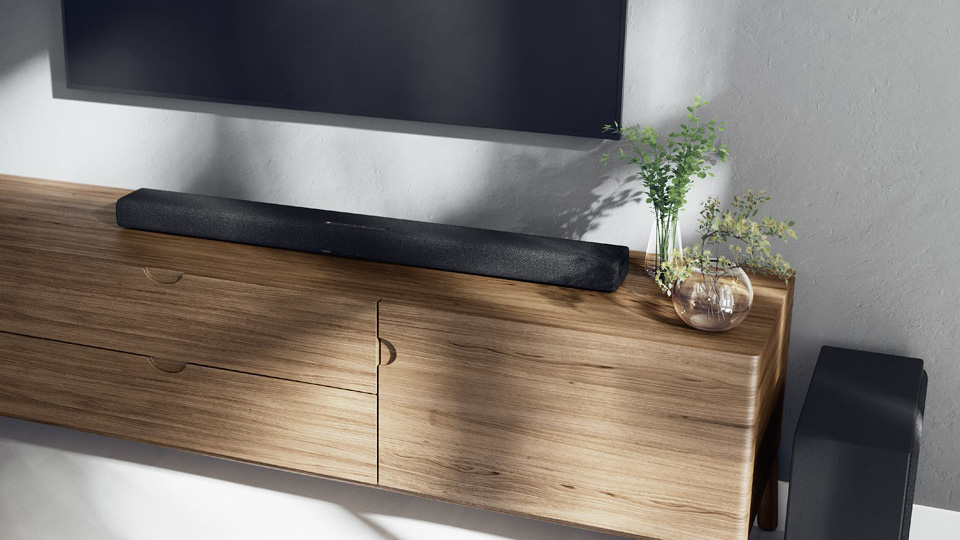
Good looks and punchily controlled sound carry the Yamaha SR-X50A so far - but it’s not as Atmos-y as is ideal, and music demonstrates it’s not a true all-rounder. But if you're after wide, energetic and impactful movie sound, the Yamaha is a system with plenty to recommend it - and its standard of build and finish, along with its understated good looks, will win admirers too.
-
+
Wide, poised and quite dynamic sound
-
+
Expressive, disciplined subwoofer
-
+
Great standard of build and finish
-
-
Not a lot of sonic height despite dedicated up-firing drivers
-
-
Underwhelming app and remote control
-
-
Exposed a little by music playback
Why you can trust T3

Yamaha, the brand that kicked off the entire ‘soundbar’ thing in the first place, is back in Dolby Atmos soundbar game - and with a modular system it calls ‘True X’. It consists of a Dolby Atmos-enabled soundbar (the SR-X40A), a wireless subwoofer (the SR-X100A) and battery-powered wireless speakers (the WS-X1A; which can be used either as surround-sound channels in a home cinema system or as stand-alone Bluetooth speakers for music).
Each of the above can be purchased individually, or at a modest discount if you want a big system. For instance, buy the soundbar and the subwoofer together and you get something called the SR-X50A - it comes in one of those L-shaped boxes that’s the bane of every stockroom assistant’s life, and it’s what we’re testing here. Has the wait for Yamaha’s return to Dolby Atmos soundbar action been worth it?
Yamaha SR-X50A: Price & Availability
The Yamaha True X SRX-50A soundbar-plus-wireless-subwoofer combo is on sale now, and in the United Kingdom it will set you back £799 or thereabouts. In the United States it’s priced at $899. Meanwhile in Australia you’re looking at AU$1299 or so.
Yamaha SR-X50A review: Features & What's New?

It’s been a while since Yamaha had a dog in the Dolby Atmos soundbar fight - and with the SR-X40A soundbar, it’s created a product that doesn’t conform too closely to the current norm, despite what it might look like on the outside.
For example, there's no dedicated centre channel here. Received wisdom is that a centre-channel speaker driver is essential in a Dolby Atmos soundbar - after all, the centre channel handles dialogue, and therefore in theory does most of the heavy lifting in virtually every movie soundtrack. But Yamaha’s engineers decided that a 4.1.2-channel arrangement was preferable, because it allows more space in the soundbar to fit the bass drivers they wanted, and allows for a wider sound.
So the soundbar is fitted with a pair of 46x66mm full-range ‘racetrack’ drivers firing forwards from the very ends of the soundbar. Just inside them, but angled upwards to create the sonic height that’s basically the whole point of spatial audio soundtracks, are a pair of 52mm cones. Further inside still, and firing straight upwards, are a couple of 75mm bass drivers. Each pair of drivers gets 30 watts of power between them with which to do their thing.




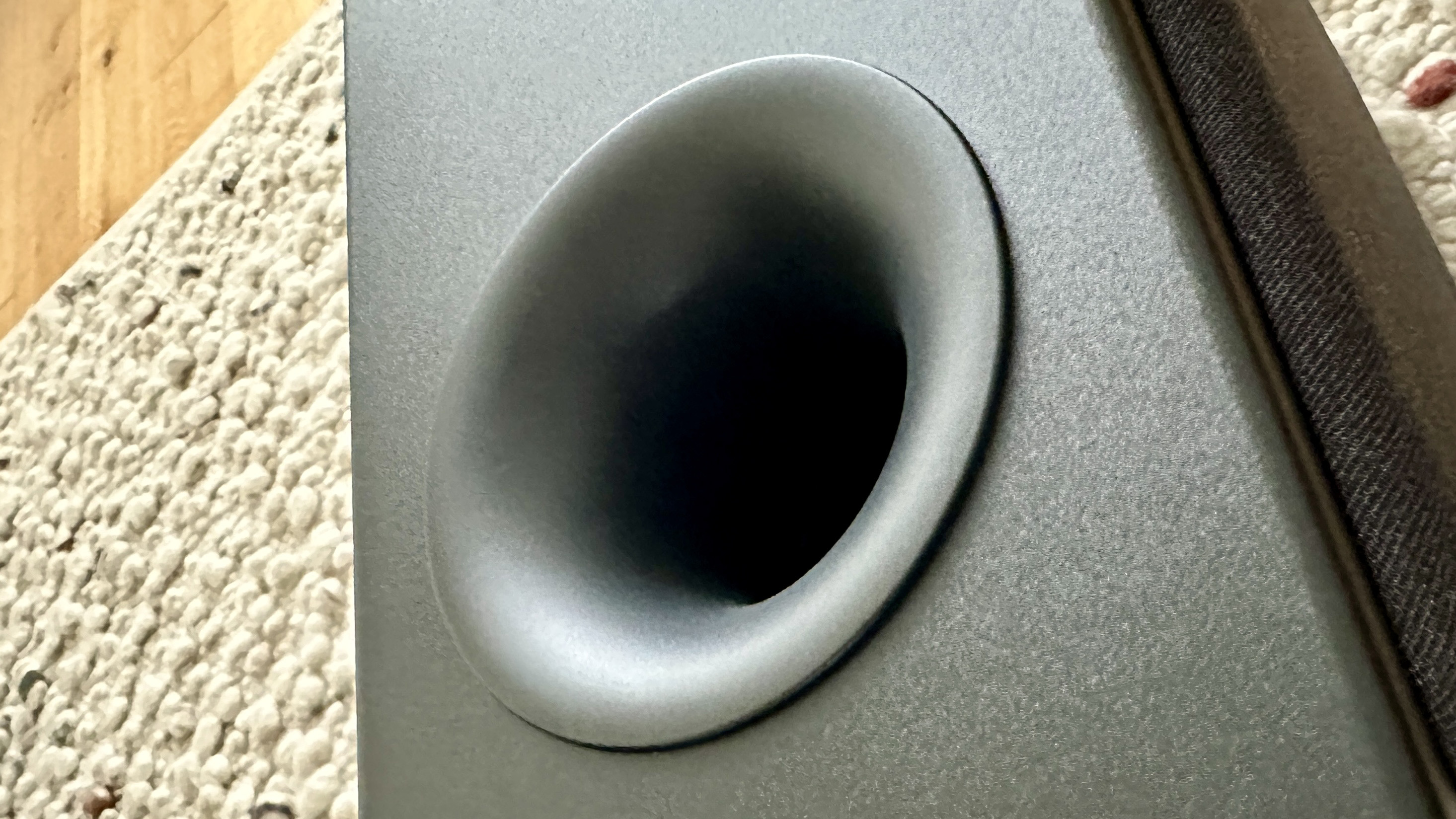
This arrangement delivers a frequency response of 55Hz - 22kHz if the soundbar is being used alone. Once wirelessly paired with the subwoofer, that number shifts to 100Hz - 22kHz, with the subwoofer using its 160mm driver and 100 watts of power to reach down to 35Hz.
Get all the latest news, reviews, deals and buying guides on gorgeous tech, home and active products from the T3 experts
The connection between the subwoofer and the soundbar is wireless, but there are of course some physical connections on the rear of the soundbar. A pair of HDMI sockets, one of which is eARC-enabled, create a passthrough, and there’s an Ethernet socket in case your Wi-Fi isn’t up to the task. A digital optical input is handy for use with older TVs, and there’s also a USB-A slot that’s for updates only.
Yamaha SR-X50A review: Performance

Let’s deal with the first thing first: the lack of a dedicated centre channel doesn’t seem to hold the Yamaha SXR-X40A soundbar back in the slightest. No matter if the scene is purely dialogue, or if it’s a verbal exchange in the midst of a colossal fire-fight, the Yamaha projects and defines voices with complete positivity. Speech is detailed and distinct, and it sits securely at the front of a well-defined and expansive soundstage.
As well as being capable of creating a convincing facsimile of a centre channel, those full-range racetrack drivers serve up impressive width too. The Yamaha can spread sound far beyond its physical limitations, and can keep them organised and convincingly positioned at the same time. And there’s sufficient bite and shine at the top of the frequency range to make you forget there are no dedicated tweeters in this soundbar, too: when that glass shatters or those bullet-casings tumble to the floor, the SR-X40A’s treble response is never less than persuasive.
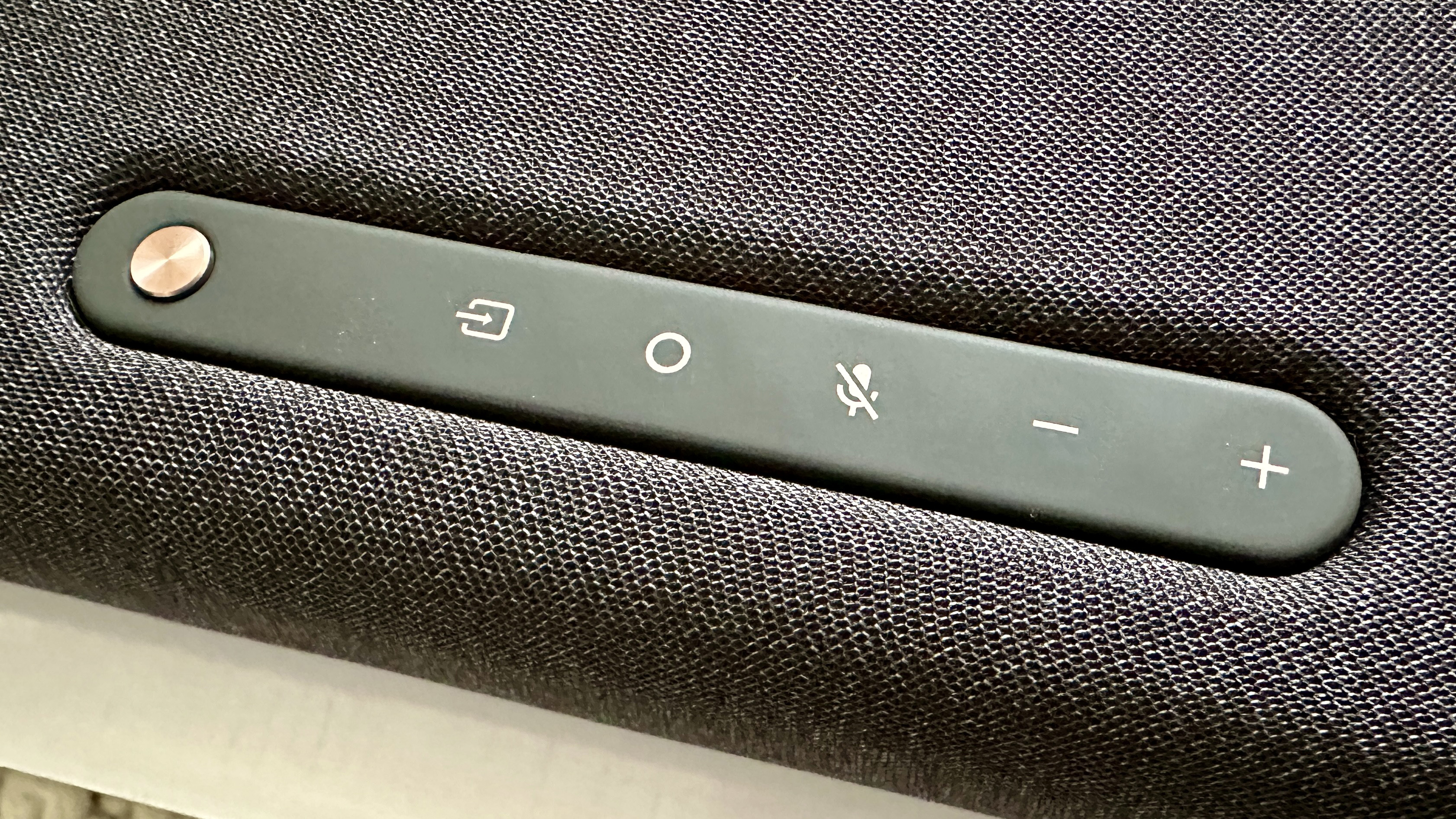
The soundbar’s overall tonality when dealing with movie soundtracks is nicely neutral, and it keeps detail levels up at an impressive level. The handover to the subwoofer is achieved without alarms, and the sub itself controls low-frequency impacts well. The world isn’t short of subwoofers that just grumble along in a monotone, but this is not one of them - the SR-X100A is observant where the attack of bass sounds is concerned, and offers worthwhile variation in bass information should it be required.
Switching to music (in stereo) highlights the subwoofer’s facility with tone and momentum even more readily - but it also more readily exposes some of the shortcomings in the soundbar’s performance. There’s a slight, but undeniable, sensation of edginess and phasiness when midrange modulates into top end, a rather papery quality to treble sounds that makes this a less-than-ideal music speaker. Switch to some music mastered in Dolby Atmos and while there are quite obvious gains in scale and width, this tonal uncertainty isn’t really alleviated.
In fact, it’s with Dolby Atmos content - no matter if it’s music or a movie - that the Yamaha is at its least convincing. Or, more correctly, it fails to properly convince where the ‘height’ aspect of Dolby Atmos sound is concerned. Despite actual, physical speaker drivers facing upwards where quite a few rivals use digital sound processing to create an impression of sonic height, and despite being tested in a room with ceilings of unremarkable height, the SR-Z40A doesn’t make all that impressive an attempt to place sound above the top bezel of the TV it’s accompanying.
Yamaha SR-X50A review: Design & Usability
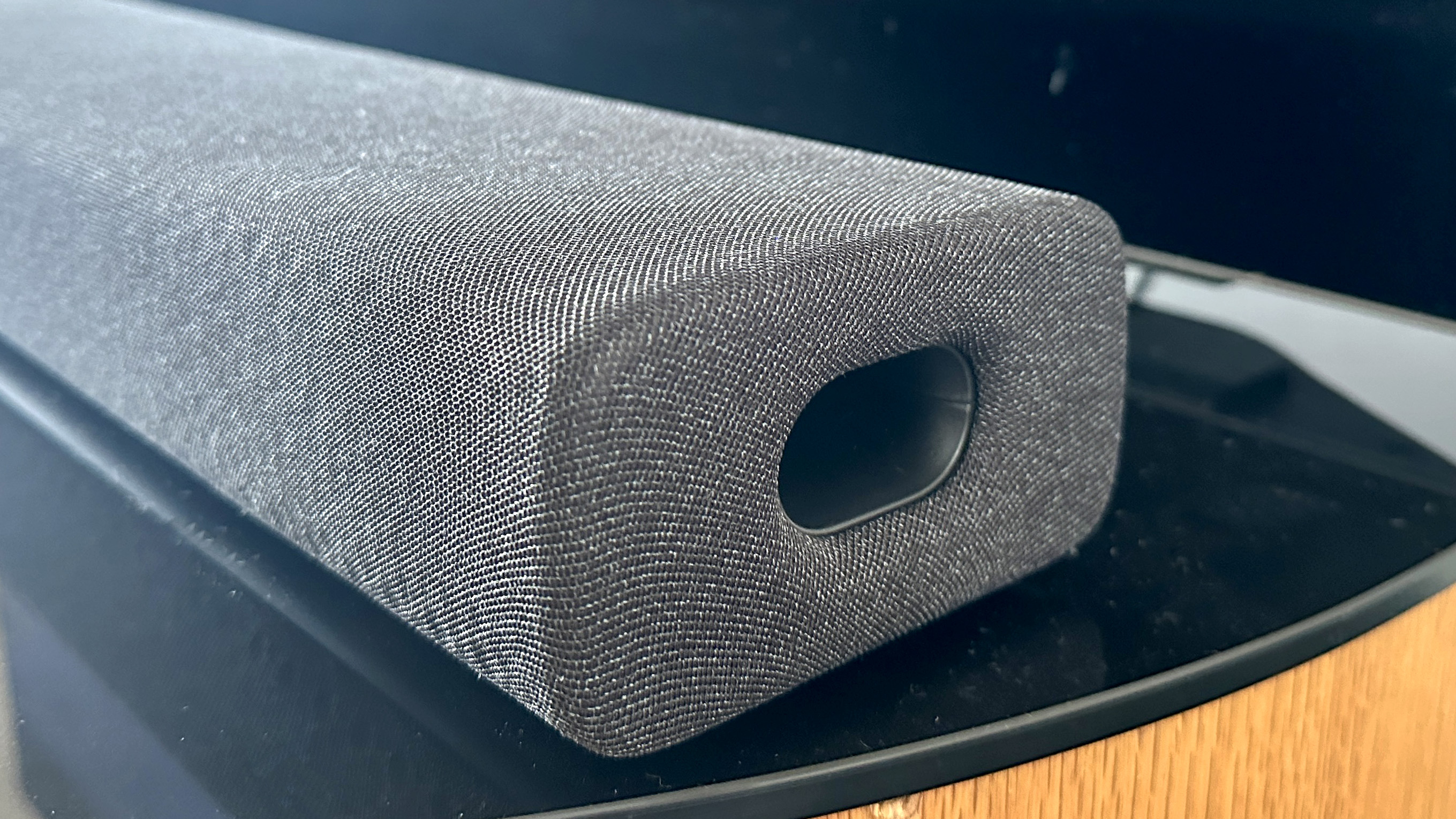
A company as pragmatic and level-headed as Yamaha is never going to get carried away where the design of its soundbars and/or subwoofers is concerned - and so the SR-X50A looks exactly as you'd expect. And it’s built and finished to the sort of standard you’d expect of Yamaha, too.
Each element of the ‘True X’ range is available in one of three finishes: black, carbon grey or light grey. The soundbar is a purposeful-yet-tidy 63 x 1015 x 112mm (HxWxD) - which makes it a very nice match, in terms of width, for one of the best 48in TVs, but won’t look underpowered beneath anything up to, say, 75in.
The subwoofer, meanwhile, is an equally manageable 407 x 187 x 409mm (HxWxD) - and, of course, the nature of its connectivity means you can position it pretty much anywhere it has access to mains power and remains within wireless range of the soundbar. Its forward-facing reflex port makes it a little more relaxed about positioning than it otherwise would be, too.
The acoustic cloth that covers the majority of the soundbar and the subwoofer’s driver looks and feels good, and is applied flawlessly. The rest of the subwoofer is fairly prosaic vinyl-wrapped MDF, but let’s be honest: you’re unlikely to want or need to touch it once you’ve got it positioned. The overall quality of finish is easily appropriate for the asking price, and Yamaha’s decision to use a sort of bronze/copper colour both for the soundbar’s physical controls and the discreet branding is a good one. The same colour is used for the labelling above the little row of lights that indicate exactly what the system is up to.
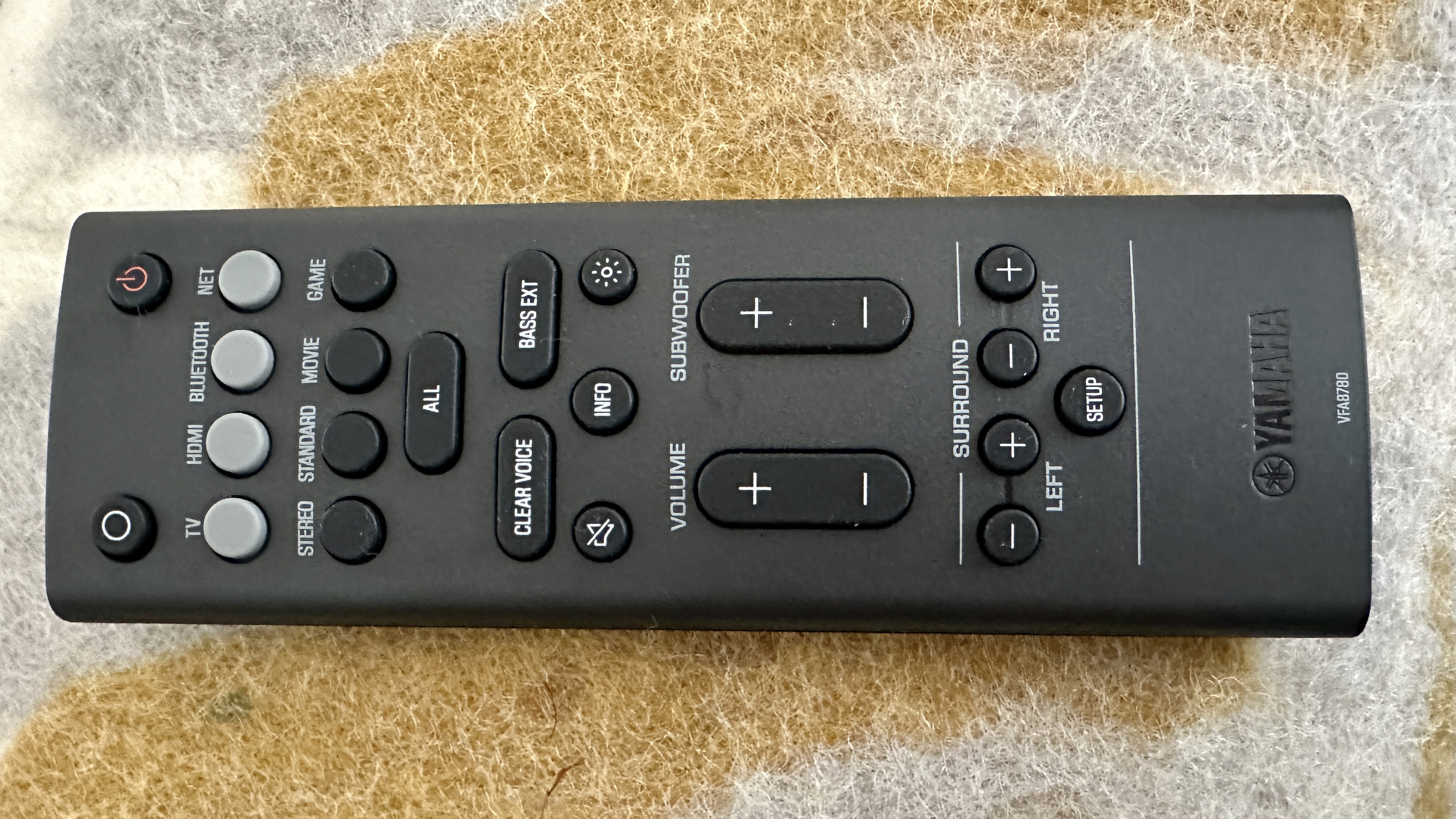
Those physical controls run to ‘power on/off’, ‘input selection’, ‘volume up/down’ and an ‘action’ button that sees most of its action when you’re initially setting up the soundbar’s Wi-Fi connection. There’s also a ‘mute’ button for the integrated mics, in case you don’t want to take advantage of the built-in Amazon Alexa voice assistance. The subwoofer, meanwhile, arrives pre-paired to its partnering soundbar if you buy the SR-X50A package - if you buy the SR-X40A soundbar by itself and then decide to add the SR-X100A subwoofer at a later date, there’s a little ‘setup’ button on the sub to facilitate pairing.
Control - up to a point - is available via the Yamaha Sound Bar Controller app that’s free for iOS and Android. It’s useful for accessing your Spotify, Tidal and QQ Music accounts, controlling volume and balancing subwoofer output against soundbar output, and selecting your sound mode (choose from ‘stereo’, ‘standard’, ‘movie’ or ‘game’). You can also switch the ‘bass extension’ and ‘clear voice’ options on or off. In truth it’s not the most logical app around, and not especially exciting to look at - but it’s got what you need, and that’s what’s most important.
All of these functions are duplicated on the system’s remote control handset. It’s made of hard, cheap-feeling plastic, goes without backlighting and could be more logically laid out - but it’s functional. It’s not unlike the control app inasmuch as it’s got everything you need, yet you’ve seen it done better.
Yamaha SR-X50A review: Verdict

If you’re after wide, energetic and impactful movie sound, the Yamaha SR-X50A is a system with plenty to recommend it - and its standard of build and finish, along with its understated good looks, will win admirers too.
But it’s on shaky ground when it comes to music playback, and the ‘height’ element of its Dolby Atmos presentation is on the underwhelming side too. That it's not as Atmos-y as is ideal leaves the door open to quite a few price-comparable alternatives…
Also consider
Samsung’s HW-Q800B is very similar to the Yamaha SR-X50A in configuration (apart from the lack of centre channel, of course), creates good sonic width and has tremendous low-frequency presence - almost too much, in fact.
If you can live without a subwoofer and HDMI passthrough, then the Sonos Arc remains a very competitive Dolby Atmos soundbar - and its membership of the world’s leading multiroom ecosystem doesn’t do any harm, either.
Simon Lucas is a freelance technology journalist and consultant, with particular emphasis on the audio/video aspects of home entertainment. Before embracing the carefree life of the freelancer, he was editor of What Hi-Fi? magazine and website – since then, he's written for titles such as Wired, Metro, the Guardian and Stuff, among many others. Should he find himself with a spare moment, Simon likes nothing more than publishing and then quickly deleting tweets about the state of the nation (in general), the state of Aston Villa (in particular) and the state of his partner's cat.
